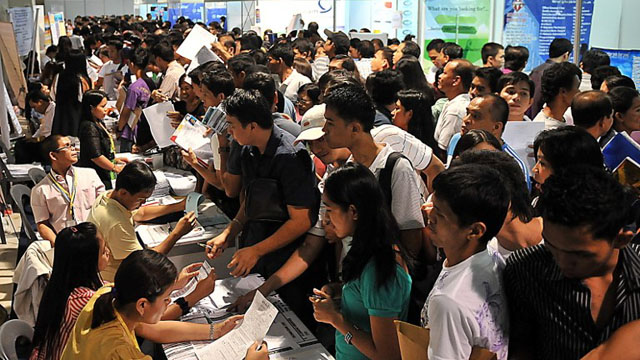SUMMARY
This is AI generated summarization, which may have errors. For context, always refer to the full article.

MANILA, Philippines – The Philippine economy may have not been able to repeat its stellar 3rd quarter performance in the October to December period, according to local think tank First Metro Investment Corp.-University of Asia and the Pacific (FMIC-UAP) Capital Market Research Center.
In the latest edition of Market Call released on Wednesday, January 23, the FMIC-UAP Capital Market Research Center said growth would have likely settled at 6% to 6.5% in the 4th quarter of 2012. This could place full-year economic growth at 6% in 2012.
“[The year] 2012 ended with some mixed economic data, although positive on balance,” the think tank noted.
It explained further: “Inflation returned to below-3% level, and the National Government’s (NG) 11-month fiscal deficit reached less than 50% of its full-year target, despite piling up expenditures, especially on infrastructures and capital outlays. Exports expanded by a decent 6.1% in October and Overseas Filipino Workers’ (OFW) remittances hit a monthly record of $1.93 billion for an 8.5% uptick also for the same month. The slowdown in electricity sales for November may indicate an unexciting period.”
“The latest slew of data would suggest that Gross Domestic Product (GDP) growth in Q4 may not be able to match the 7.1% gain in Q3 (year-on-year). Rather, it may fall more between 6.0% and 6.5%, but still have a full-year expansion in excess of 6%, despite the Eurozone and Middle East turmoils, and slowdowns in the US and China,” it added.
A key indicator of this slowdown, the FMIC-UAP Capital Market Research Center said, is the lackluster growth in the creation of jobs in the country. It said that while the economy grew 7.1% in the third quarter, close to 900,000 jobs were lost based on the October Labor Force Survey (LFS) data of the National Statistics Office (NSO).
Peso factor
Market Call stated that the net loss jobs in October reached 877,000 from the 478,000 new jobs created in July. On a yearly average, LFS estimated 431,000 net new jobs in 2012, a 62.4% decline from 1.1 million jobs created in 2011.
The think tank said one of the factors for job losses was the appreciation of the peso. This has cost many exporting firms to downscale its workforce or close shop, as well reduce the competitiveness of Business Process Outsourcing (BPO), a major growth driver and job creator.
FMIC-UAP Capital Market Research Center said BPO firms in the Philippines have lost their competitiveness against their counterparts in India, who enjoyed a 20% currency depreciation during the period.
“Despite the return of some foreign manufacturing firms to the country, as an alternative to China and Thailand, our statistical studies show that the peso appreciation has significant negative impact on employment, since this makes foreign raw materials and finished goods relatively cheaper than domestically produced goods,” the think tank explained.
“The negative employment data do not square up with the 7.1% Q3 GDP growth and are a conundrum that officials need to explain,” it added.
High hopes for 2013
Despite the lackluster performance of the Philippine economy in the last quarter of 2012, the FMIC-UAP Capital Market Research Center said Gross Domestic Product (GDP) growth in 2013 will likely hit 8%, the high-end of the government’s 7% to 8% growth target for this year.
“With the year ending at a high note, and prospects both at home and abroad looking a bit better, we think that 2013 would show an acceleration in growth by as much as 8%, assuming the peso does not appreciate to below P40 (per dollar),” the think tank said.
“The outlook for 2013, however, looks better, with election spending likely to provide an additional boost to domestic demand. Public and private construction appear headed for another strong performance, while exports and manufacturing may have a better year, considering better economic data for the U.S. And China in November and December,” it added.
Growth will also be driven by strong consumption spending this year with expectations that the country’s inflation rate will settle at around 2.8% in 2013. This is below the 3% to 5% inflation target set by the Bangko Sentral ng Pilipinas (BSP) every year until 2015.
The think tank said one of the major factors for the low inflation environment in 2013 on the back of lower crude oil prices as forecasted by the United States Department of Energy and the U.S. Energy Information Administration (EIA) for West Texas Intermediate (WTI) and Brent crude oil prices. – Rappler.com
Add a comment
How does this make you feel?
There are no comments yet. Add your comment to start the conversation.